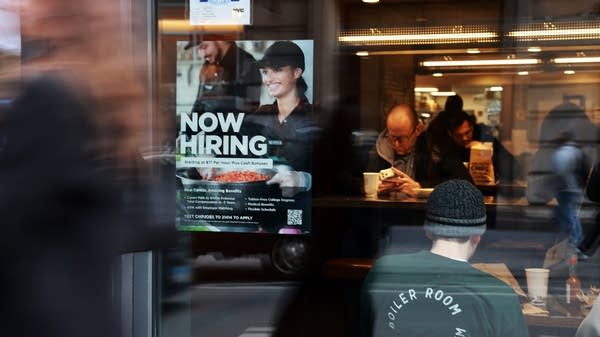How a bathtub can help us understand what’s happening in the labor market
Data out Tuesday from The Conference Board indicates consumers think the tub is draining faster than it’s filling up.

A couple economic data points for you for this story.
Data point No. 1: There were 7.2 million job openings in March. That’s according to the Job Openings and Labor Turnover Survey, or JOLTS, out Tuesday morning. That’s about a million fewer than the same time a year ago.
Data point No. 2 has to do with how people are feeling about how many jobs are out there. According to the consumer confidence report out Tuesday from The Conference Board, in April, fewer people believed jobs were plentiful compared to last month, and more feel like jobs are hard to get. The difference between those two numbers is what economists call the “labor market differential.”
In economics, there’s this metaphor that’s meant to explain where unemployment is headed.
Northwestern University economics professor Kirabo Jackson said it’s called the bathtub model.
“Job openings is the water going into the tub,” said Jackson.
Layoffs, retirements — that’s water leaving the tub.
In an ideal world you'd have a tub that’s two-thirds full. That’s the right mix of job openings and exits. Water is not sloshing over the sides.
That’s what was happening a few years ago, when it was really hard for companies to hire workers. But you still want enough water to feel comfortable — get clean, soak for as long as you like.
And when the labor market differential shrinks like it’s doing right now, Jackson said that means the water is draining faster than it’s filling up.
“Which kind of is telling us that overall, we expect the unemployment rate to go up and the market to sort of deteriorate to some extent,” said Jackson.
The labor market differential acts as a proxy for the unemployment rate. When it goes down, it indicates that the unemployment rate is likely going up.
Stephanie Guichard, a senior economist at The Conference Board, said that’s because the consumers surveyed — they aren’t economists — they’re making these calls based on their feelings, but also their observations.
“So they look around — how their family, their friends, their colleagues are doing in terms of the labor market,” said Guichard.
Right now, both the survey data and the hard data still look OK-ish. In other words, the water in the bathtub has gone down a few millimeters.
But economist Guy Berger at the Burning Glass Institute points out if you look at what consumers are expecting six months from now, they think it’s gonna get a lot worse.
“People are also telling you, you know what? I actually think the bathtub is going to drain a lot faster in the next few months,” said Berger.
And if people are expecting more bad news about the economy, they might pull back on their spending. You’re much more less likely to buy a rubber duck today if you think a few months from now you’re just gonna be left naked and shivering alone in a tub.













